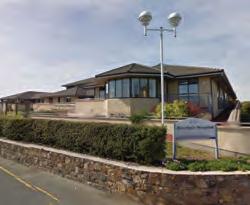
3 minute read
Benefiting from R&D tax relief
Story for Community? Email Nicky Roger nicky@atompublishing.co.uk
OPINION Why are only 1% of construction firms benefiting from R&D tax relief?
Advertisement
Specialist tax advisors can help companies to identify and claim for potentially eligible projects
The R&D tax relief/credit scheme
was introduced by the UK government in 2000 to incentivise investment in innovation and reduce financial risk by providing a potential cost saving of up to 25p for every £1 spent on eligible R&D activity.
While there have been year-on-year increases in claims, the construction sector is still not realising the full financial and competitive benefits of the scheme.
In 2018-19, only 1% (3,340) of construction firms made a claim for research and development (R&D) tax relief, with the sector making up just 5.6% of all claims (HMRC, Research and Development Tax Credit Statistics September 2020).
It is recognised that small profit margins previously stifled progress, restricting investment in innovation. However, the sector is now being transformed by a number of factors, including: l Regulatory/client focus on reducing energy use and carbon emissions; l Adoption of digital technologies (e.g. BIM); l Growth of offsite manufacturing and use of modular building techniques; and l Increasing popularity of integrated design and construction procurement systems (e.g. design and build).
So why are more companies not making R&D tax relief claims?
Many companies remain unaware of the tax relief scheme or have misconceptions over which companies and what activities qualify as eligible R&D. It is also recognised that many firms may view potential qualifying R&D activity as simply part of their usual work routine.
As a result, many companies may benefit from the support provided by specialist R&D tax advisors who can help identify potentially eligible projects, write technical reports (a requirement of an R&D tax relief claim) and determine qualifying expenditure (including staffing, subcontractors, consumables and software).
When considering the level of support (and associated cost) required, companies should consider the potential complexity of R&D activities, experience of their accountant and the time available for staff engaged in eligible activity to produce technical reports. l
The information in this article formed part of a CIOB member webinar given in December 2020 by Chris Lowe, an R&D technical analyst at Haleys Business Advisors.
www.haleysba.co.uk.
Health Jersey-based CBC working on new hospital
Plans for Overdale site
Jersey-based CIOB Chartered Building Company ROK has entered into a joint venture with Spanish-based FCC Construcción to build Our Hospital Project (OHP) on the Channel Island.
The project is in a preconstruction phase until March 2022. The site at Overdale (pictured) has been approved as the preferred location for the new hospital and community consultations have taken place.
Design will start on 1 March. Construction is expected to last four years to be followed by a post-construction period of around three years.
The OHP will provide Jersey with a fully integrated, 21st century healthcare facility. The overall aim is to deliver a facility that will be an integral part of the local community and will give patients greater choice, access and provision of quality and efficient services and enhance the overall health and wellbeing of the local people. The OHP is committed to linking every opportunity presented by this project into the needs of the local community and is focused on creating social, economic, health and environmental benefits that will have a positive impact and leave a lasting legacy for the Island.











